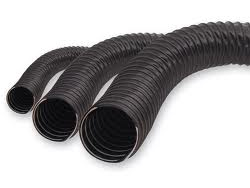A ventilation system is an absolutely important piece of equipment to have in this day and age, and it has many useful benefits in and around the home as well as the workplace. With the many different types of duct ventilation available on the market however, it can be quite confusing to figure out which particular model is the right one for your needs.
The basic functions of such devices are:
Flex ducts are other common types of duct ventilation, although they have the notable disadvantage of being prone to condensation buildup. These types of duct ventilation are most often used in residential construction, as they are quite affordable and easy to install. In addition to their condensation issues, these types of duct ventilation are often the least efficient in terms of thermal capability.
Finally, metal duct types of duct ventilation provide the least efficient performance of the three. These systems are typically not insulated at all, and they may be formed into a cylindrical or rectangular shape. The main advantage of these types of duct ventilation is that they are inexpensive, although they too tend to have condensation issues in addition to being leaky and noisy.
Back to Top
Where duct ventilation is used
Before we get into the different types of duct ventilation, it would be worthwhile to discuss the equipment wherein such components are typically used: the ventilation system. In most cases, the different types of duct ventilation are utilized in an HVAC or heating, ventilation, and air conditioning system. Such systems are tasked with the function of providing heated or cool air, and they typically use one or more types of duct ventilation.The basic functions of such devices are:
- to move hot or cool air from the interior of a building
- to clear out stale or unwanted air
- to get rid of toxic fumes
- to eliminate unwanted smells
- to reduce airborne contaminants
- to reduce particulates in the air
Varying performance of ventilation systems
The many different types of duct ventilation tend to vary considerably with regard to how well they are able to maintain the quality of the air and/or its temperature. At the same time, the different types of duct ventilation are expected top carry out their basic functions with as little condensation and noise as possible. It is also worthwhile to note that no matter what types of materials are used, all types of duct ventilation will provide generally better results when they are insulated properly.Types of duct ventilation
Some of the more common types of duct ventilation materials/designs are:- fabric
- flex
- metal
Flex ducts are other common types of duct ventilation, although they have the notable disadvantage of being prone to condensation buildup. These types of duct ventilation are most often used in residential construction, as they are quite affordable and easy to install. In addition to their condensation issues, these types of duct ventilation are often the least efficient in terms of thermal capability.
Finally, metal duct types of duct ventilation provide the least efficient performance of the three. These systems are typically not insulated at all, and they may be formed into a cylindrical or rectangular shape. The main advantage of these types of duct ventilation is that they are inexpensive, although they too tend to have condensation issues in addition to being leaky and noisy.
Back to Top
Duct Ventilation

Duct Ventilation Resources
- Home
- Air Ventilation Duct
- Aluminum Ventilation Duct
- Bathroom Ventilation Duct
- Duct Ventilation FAQs
- Flexible Ventilation Duct
- Kitchen Ventilation Duct
- Mine Ventilation Duct
- Types of Duct Ventilation
- Ventilation Duct Supplies
- Ventilation Duct
- Ventilation Duct Cleaning
- Ventilation Duct Design
- Ventilation Duct Sizing
Sponsored Links
